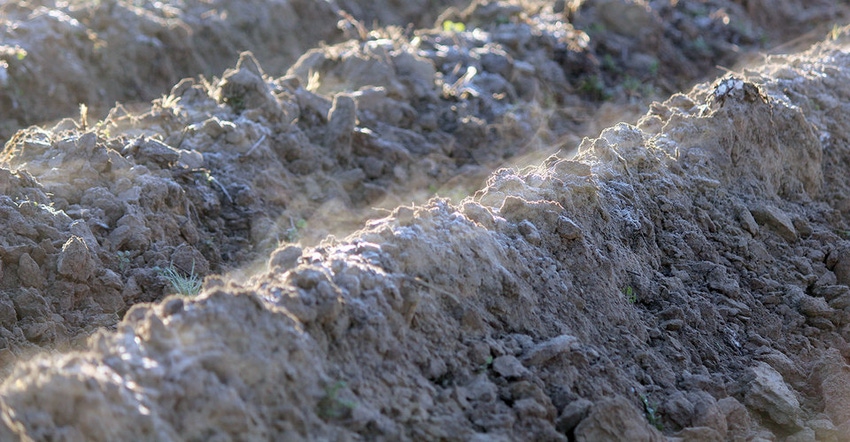
There can be many factors related to soil health limiting a farmer’s crop yields. From poor drainage, low fertility, and compaction, each could be a contributing culprit causing you money at harvest-time.
Most farmers know when they have a compaction problem, but do they know what really causes it? Rachel Stout Evans, Soil Survey Office Leader, USDA, NRCS, does. “Silty soils compact easily because the silt particles themselves are rather flat, so they ‘stack and pack’ very easily,” explains Evans. “With annual tillage, the top of the plow zone gets ‘fluffed’ up as the disks cut and crumble the soil, destroying the soil’s structure.”
As a plow is pulled across the field, the bottom of the plow zone — where the disks are hitting, gets packed and beaten. During that process, the soil’s structure is transformed from blocky to plate-like thin layers, destroying pore spaces in the soil. “Those flat silt particles then stack together very closely with no space between them,” adds Evans.
The platy layer at the bottom of the plow zone called the “plow pan” becomes a restrictive feature because of limiting pore space. Water and plant roots have a difficult time penetrating through this plow pan. “When I’m asked to visit a producer’s farm to investigate compaction concerns, I know what I’m probably going to find,” adds Evans. “A tell-tale sign is ‘J-rooted’ plants — and cotton is one that will show it quickly because of its tap root.”
If water and air cannot move through this restrictive layer, plant roots will struggle to get oxygen, and water will stall above the plow pan. “Without a deep root system, plants cannot forage for nutrients beyond the top 4 to 6 inches of soil,” adds Evans. “A shallow-rooted plant has more stress-related problems than a deep-rooted plant.”
What to Do?
Cotton grows well on silty soil and very fine sandy loam soils. The loess hills of Tennessee and Mississippi (Southern Mississippi Valley Loess of Major Land Resource Area 134) are comprised of high silt soils and extremely productive for cotton. “If a farmer has a compaction problem due to tilling his ground each year, the long-term solution is to gradually convert the operation to some form of limited tillage,” advises Evans. “A combination of minimal soil disturbance and the use of cover crops during the off-season to keep living plant roots in the ground organic matter will keep living plant roots in the ground year around will build organic matter.”
After a few years of cover crops, the activity of cover crop roots and the additional organic matter will help relieve the compacted zone and rebuild the soil structure into blocks, rather than plates. “This will allow water to flow into the layers of the soils where it’s needed, and roots can grow unrestricted,” explains Evans. “For many farmers who have always tilled their soil before planting, this may not be an easy transition, but it is one worth attempting.”
For more information on improving soil health on your farming operation, visit the USDA-NRCS soil health webpage at https://bit.ly/2jIWwzL or contact your area NRCS resource soil scientist.
About the Author(s)
You May Also Like




